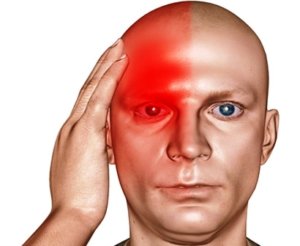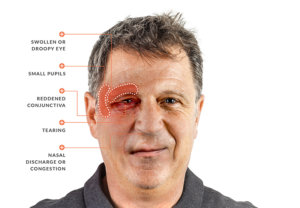Share this post!
Headaches: Part 1
Over the next couple weeks we are going to be going to be talking about headaches. We will go over what a headache is, the different types of headaches and how to treat the different types of headaches. So let’s get’s started!

Credit: https://www.universityofcalifornia.edu/news/whats-causing-your-migraine
What is a Headache?
A headache is defined as pain located in the head. Headaches may occur on one or both sides of the head, be isolated to a certain location, radiate across the head from one spot or a band like quality. A headache may appear as a sharp pain, throbbing sensation, or dull ache. Headaches can develop gradually or suddenly and may last a from less than an hour to several days. They are commonly divided into 2 categories:
Primary Headache:
A primary headache is a headache that is not caused or attributed to another disorder. The most common primary headaches are Migraines, tension-type headaches, and Trigeminal autonomic cephalalgias (TACs, cluster headaches).
Secondary Headache:
This is a headache that is caused by an underlying disorder. They are commonly attributed to a causative disorder such as an head and/or neck, vascular disorder, non-vascular intracranial disorder, substance or its withdrawal, infection, psychiatric disorders, or any disorder related to the structures of the head and/or neck. A secondary headache may have the characteristics of a primary headache but still fulfill the criteria for causation by another disorder. The most common secondary headache is cervicogenic headache.
Types of Headaches
Migraine
- A migraine is a common disabling primary headache and has been ranked as the third most prevalent disorder in the world. There are two major types of migraines:
- Migraine without aura
- Recurrent headache disorder manifesting in attacks lasting 4-72 hours. Typical characteristics of this headache are unilateral location, pulsating quality, moderate or severe intensity, aggravation by routine physical activity and association with nausea and/or photophobia and phonophobia.
- Migraines with aura
- Are recurrent attacks, lasting minutes, of unilateral fully-reversible visual, sensory or other central nervous system symptoms that usually develop gradually and are usually followed by headache and associated migraine symptoms.
- Aura consists of visual and/or sensory and/or speech/language symptoms, but no muscle weakness
- Migraine without aura

Migraine (credit: http://www.ihealthy.me/2018/01/8-treatments-for-migraines-headaches.html)
Tension Type Headache (TTH)
- Tension-type headache is very common. TTH headaches are characterized as typically a pressing or tightening on both sides of the head and of mild to moderate intensity, lasting minutes to days. Also, this pain does not worsen with routine physical activity and is not associated with nausea, although photophobia or phonophobia may be present.

Tension Type Headache (credit: http://lifeprovidr.com/disease-prevention/preventing-tension-type-headache/)
Trigeminal autonomic cephalalgias (TAC)
- The most common TAC is cluster headache. Cluster headaches are attacks of severe, strictly one sided pain which is in the frontal and/or temporal region of the skull. These headaches usually last 15-180 minutes in duration. They typically occur from once every other day to eight times a day. Furthermore, the pain is associated with one sided watering eye, nasal congestion, forehead and facial sweating, drooping of eyelid, and/or with restlessness or agitation.

Cluster Headache (credit: http://pulsante.com/eu/en/cluster-headaches/symptoms-cluster-headache/)
Cervicogenic Headaches
- This is the most common secondary headache. This headache caused by a disorder of the cervical spine and its component bony, disc and/or soft tissue elements. It is commonly found with neck pain but can be associated with no neck pain. This headache is typically made worse with neck movement and has significantly improved or resolved in parallel with improvement in resolution of the cervical disorder.

Cervicogenic Headache (credit: https://reliefchiropractic.co.uk/conditions/cervicogenic-headache/)
Thanks for reading and we hope you now have a better understanding of headaches. Next we will be talking about the different treatment options for headaches. If you have any questions do not hesitate to ask. If you would like to book an appointment give us a call at 519-376-5657, email us here or book online.
References
The International Classification of Headache Disorders, 3rd edition. https://www.ichd-3.org/
